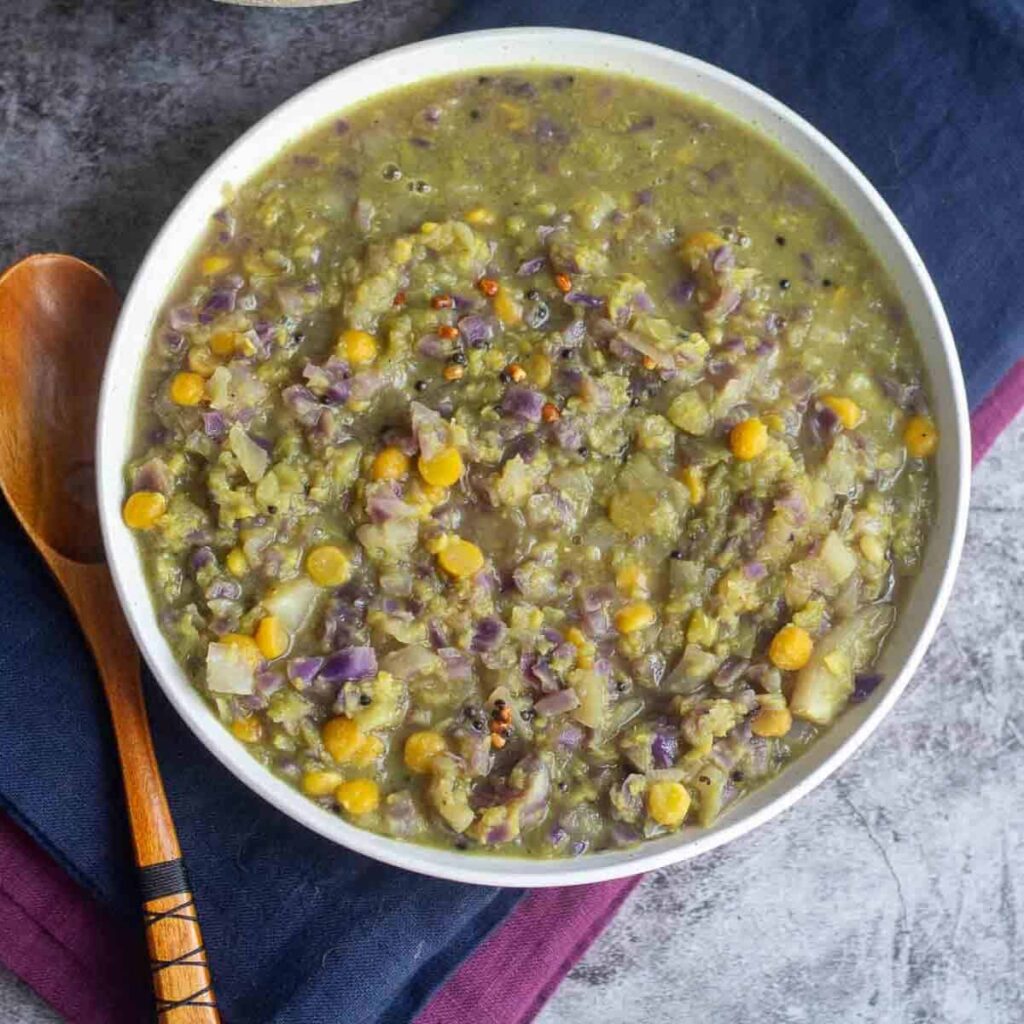Today’s recipe is a simple, everyday rice accompaniment and one of the most common and popular side dishes in a traditional Tamil Nadu full meal—kootu! I’m sharing a no-garlic version made with a blend of green and purple cabbage, freshly ground coconut, curry leaves, and cilantro masala.
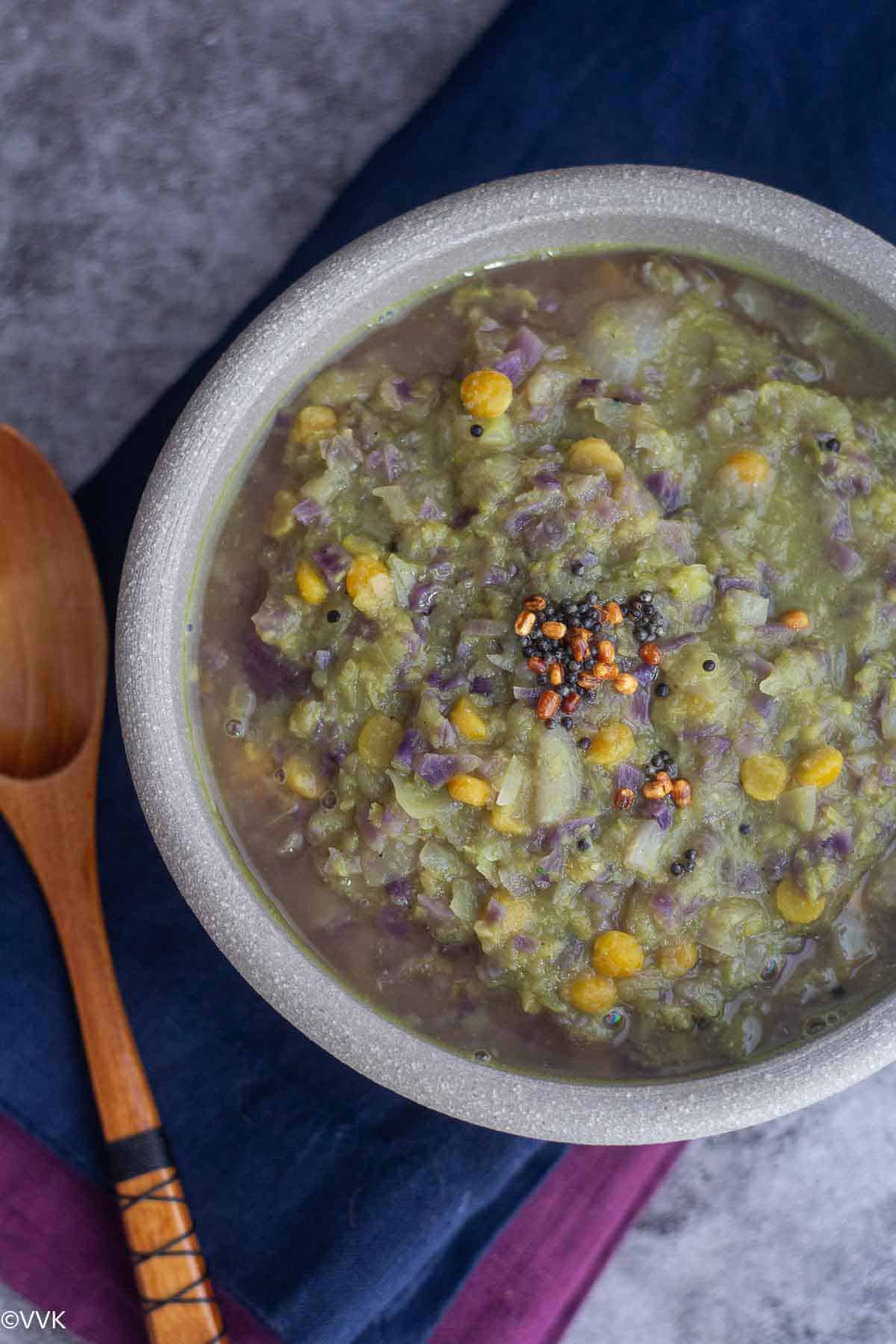
Cabbage is one of my favorite vegetables—I enjoy it in kootu, poriyal, spicy curries, salads, and even chutneys. Back in India, I only came across green cabbage and had never seen purple (or red) cabbage. When I first found it here, I was excited to try it right away. In terms of taste, both green and purple cabbage are quite similar, so I regularly use both in my cooking.
Jump to:
Herb-infused cabbage kootu recipe
I’ve previously shared a simple Instant Pot cabbage kootu recipe. Today, I’m bringing you a traditional version with freshly ground coconut paste—plus my little twist!
What’s the Twist?
While we all know that curry leaves and cilantro are packed with health benefits, we often discard them. To ensure we get their full flavor and nutrition, I blend them into the kootu masala along with coconut, cumin, and green chilies.
Ingredients you’ll need
Lentils:
I use a mix of moong dal and chana dal—chana dal adds a wonderful texture, especially in cabbage and ash gourd kootu.
Cabbage:
I use an equal mix of green and purple cabbage, discarding the tough stems and chopping the tender leaves.
Masala:
This cabbage kootu follows the classic kootu masala formula with coconut, cumin seeds, and green chilies. Additionally, I include black pepper, cilantro, and curry leaves. Since I use pepper, I skip asafoetida.
Tempering:
I prefer coconut oil for its rich flavor, but you can use peanut oil or any neutral oil. For tempering, I use mustard seeds and urad dal, skipping chana dal since it’s already in the kootu.
Other essentials include salt, water, and turmeric powder. You can find the exact measurements in the recipe card.
Dietary information
This cabbage kootu is naturally gluten-free, nut-free, and vegan, making it a wholesome choice for everyone.
Storage tips
You can refrigerate this kootu for up to 4 days. If making a large batch, take out the required portion and reheat it as needed. While I haven’t tried freezing it, you definitely can!
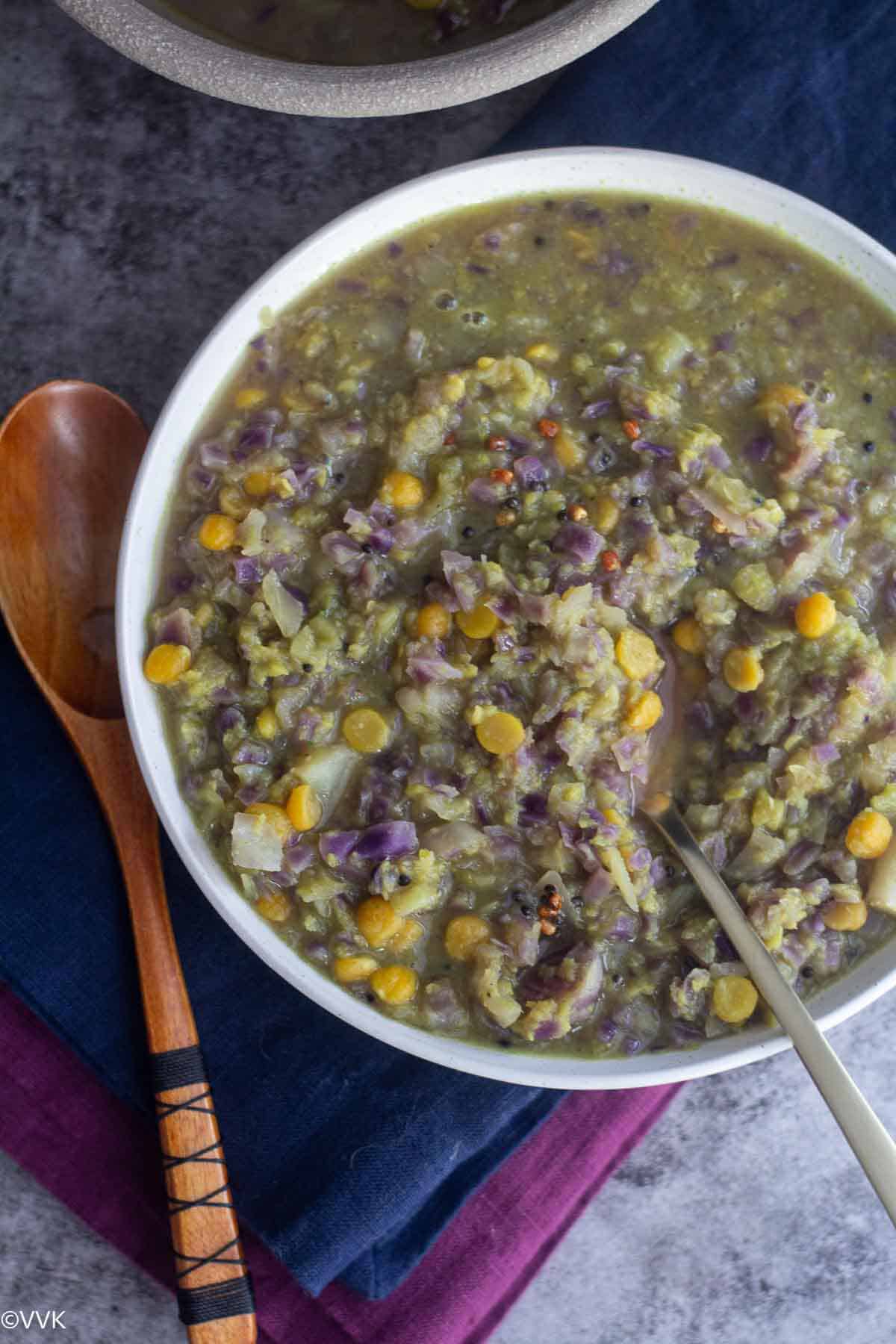
What to serve it with
- Enjoy it with rice or any grain of your choice, paired with papad or pickle for a comforting meal.
- Serve it alongside sambar rice, kuzhambu, or rasam and rice for a classic South Indian combination.
- While it pairs well with roti, I love having it with rice.
I hope you give this delicious and nutritious cabbage kootu a try! Let me know how you like it! 😊
How to make cabbage kootu
- Rinse the moong dal and chana dal thoroughly and add them to the cooking vessel. To this, add shallots, turmeric powder, and 1 cup of water.
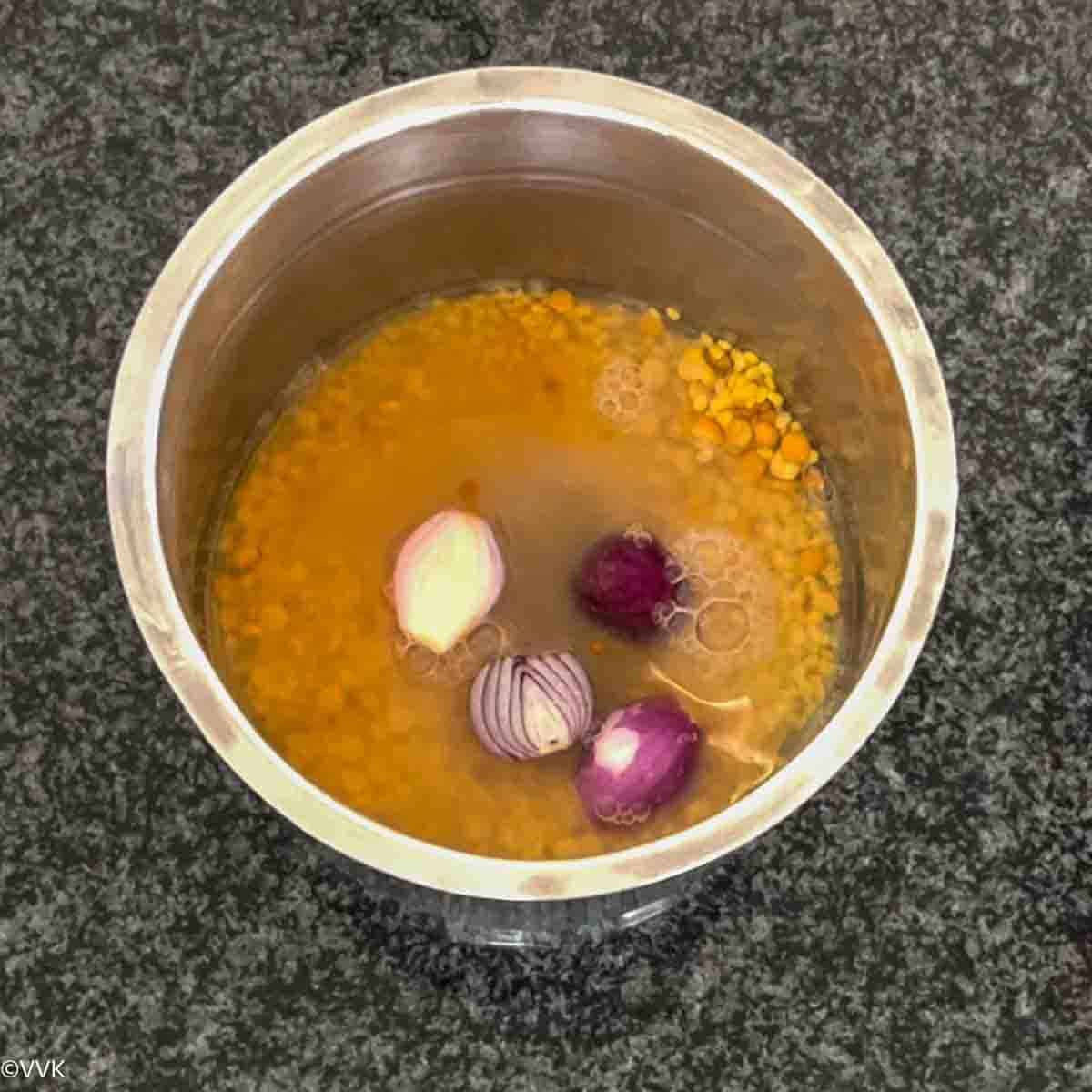
- Layer the rinsed and chopped cabbage on top of the dal mixture without adding extra water.
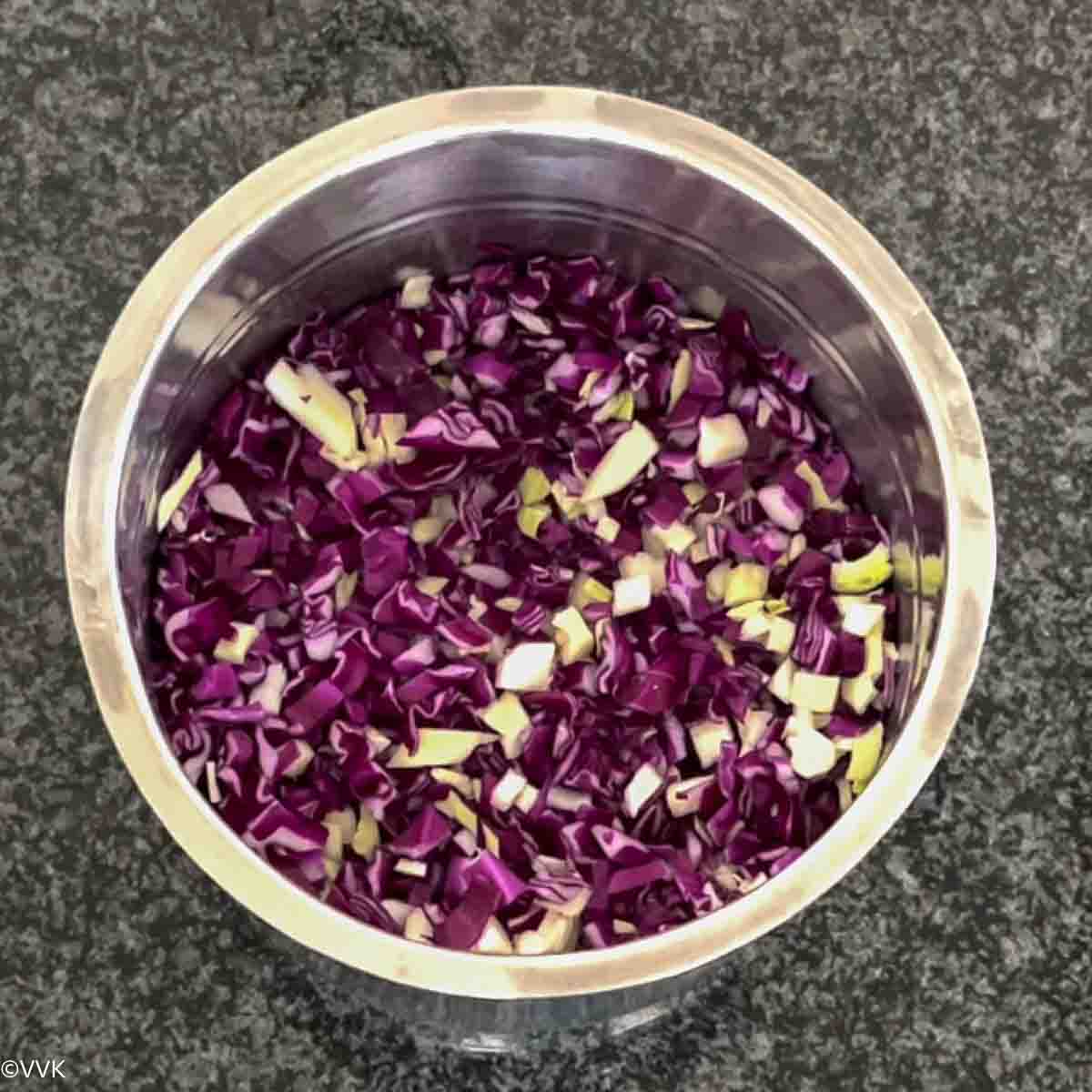
- Pressure cook for three whistles using a stovetop pressure cooker with the pot-in-pot method—add 2 cups of water to the base of the cooker, place the vessel inside, and cook. Let the pressure release naturally.
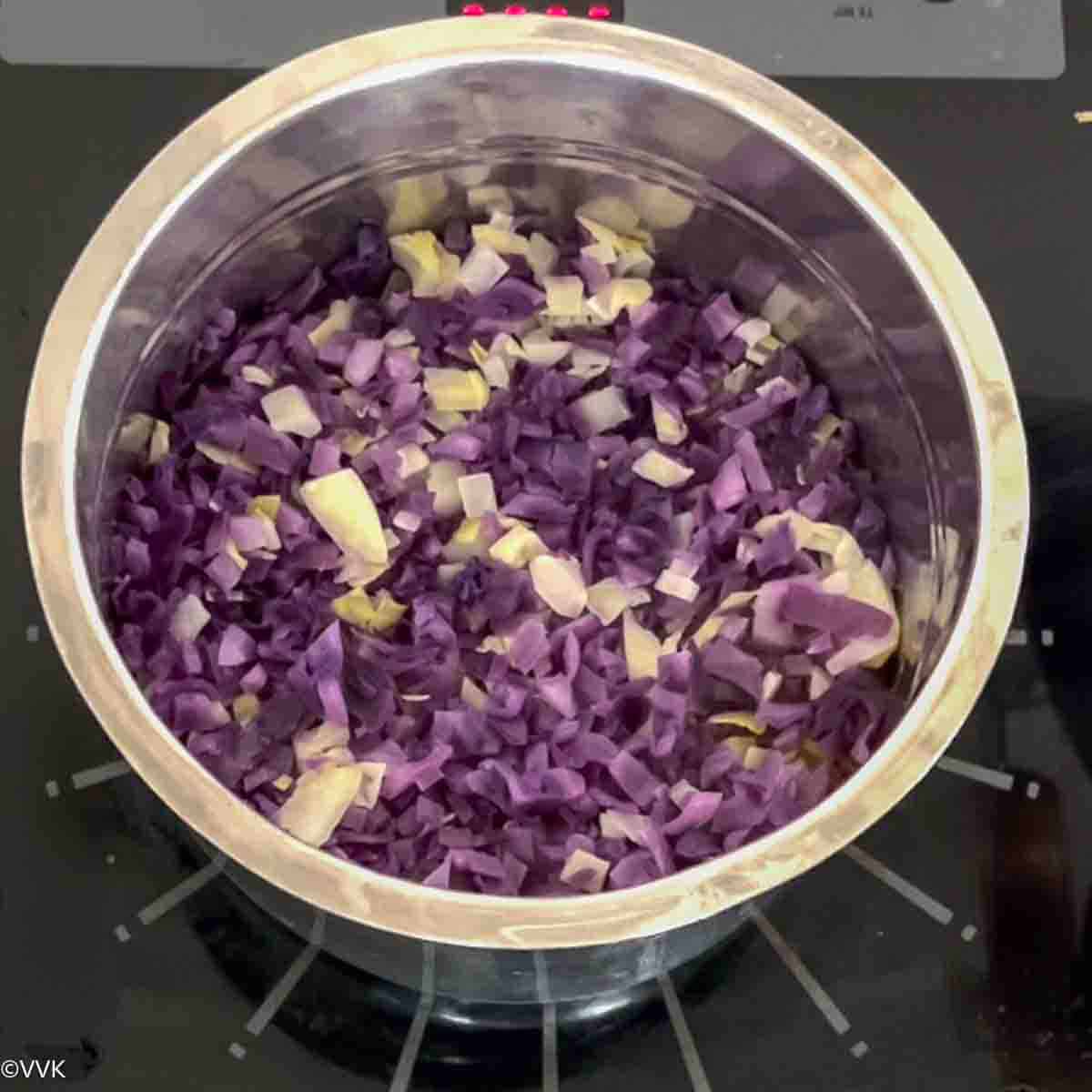
- Meanwhile, grind coconut, green chilies, curry leaves, cilantro, cumin seeds, and pepper with ¼ cup of water to prepare the kootu masala.
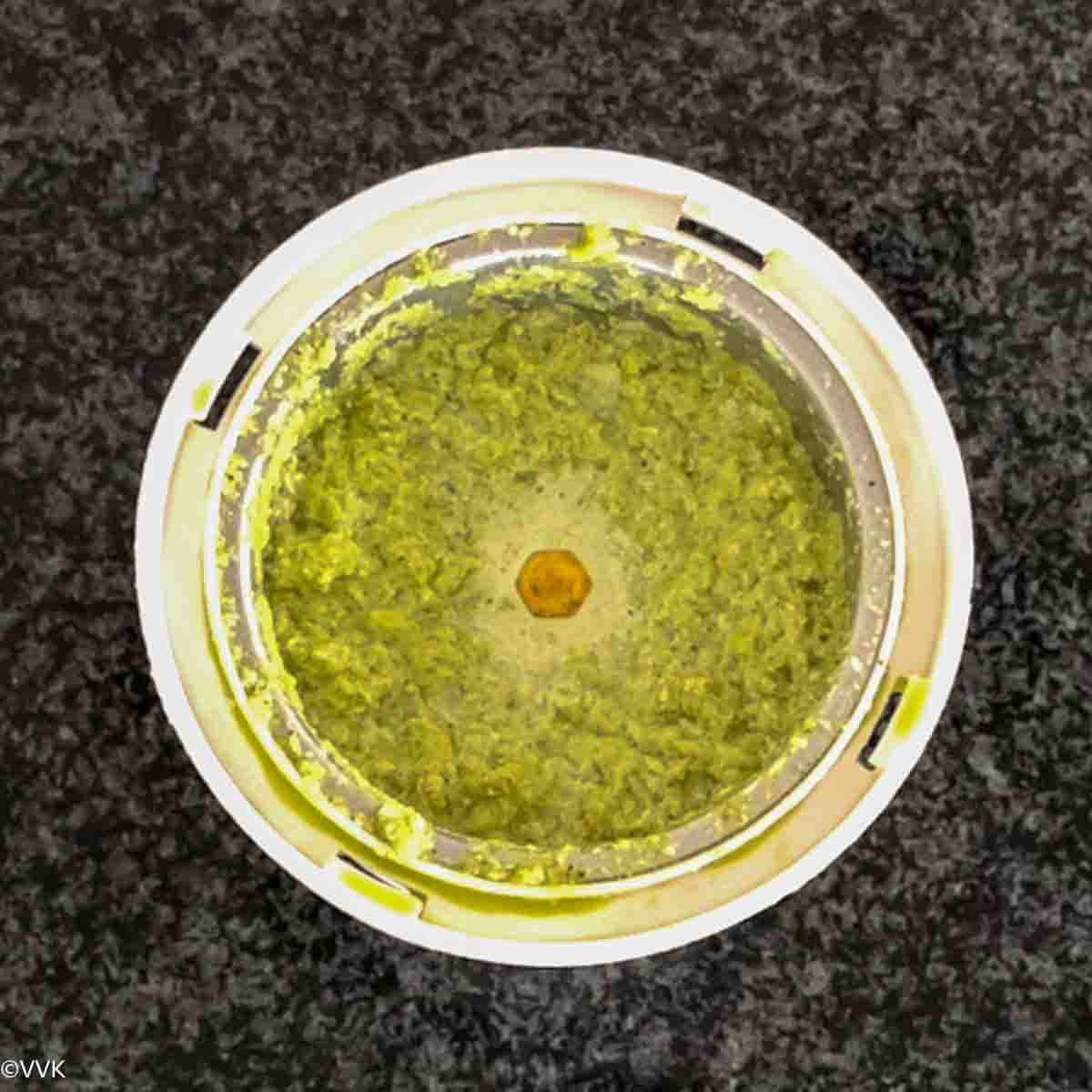
- To the cooked cabbage and dal, add 1.5 teaspoons of salt and mix well.
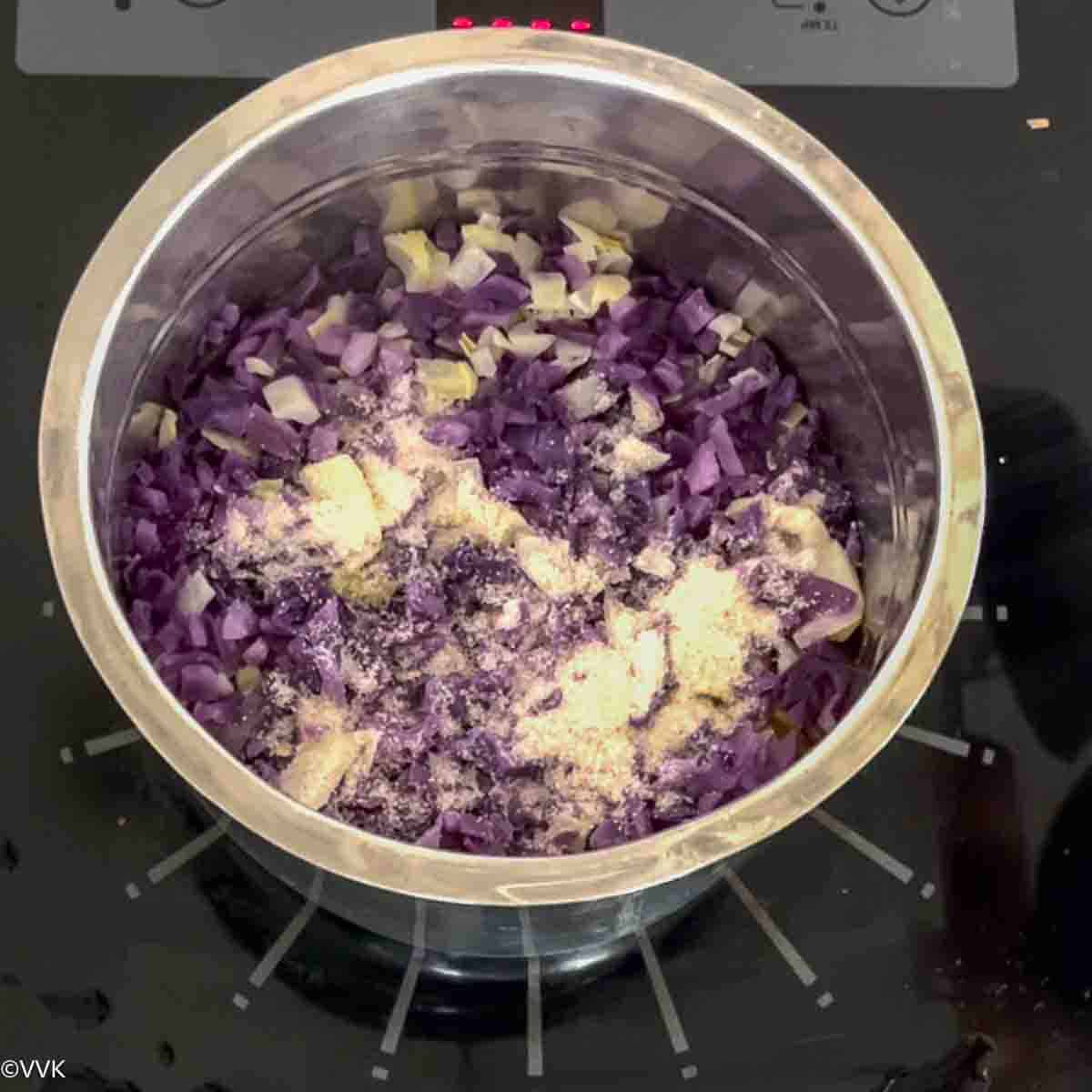
- Stir in the ground masala along with ¼ cup of water (used to rinse the mixer jar) and bring the mixture to a gentle boil. As cabbage releases more water, avoid adding extra liquid beyond the recommended amount.
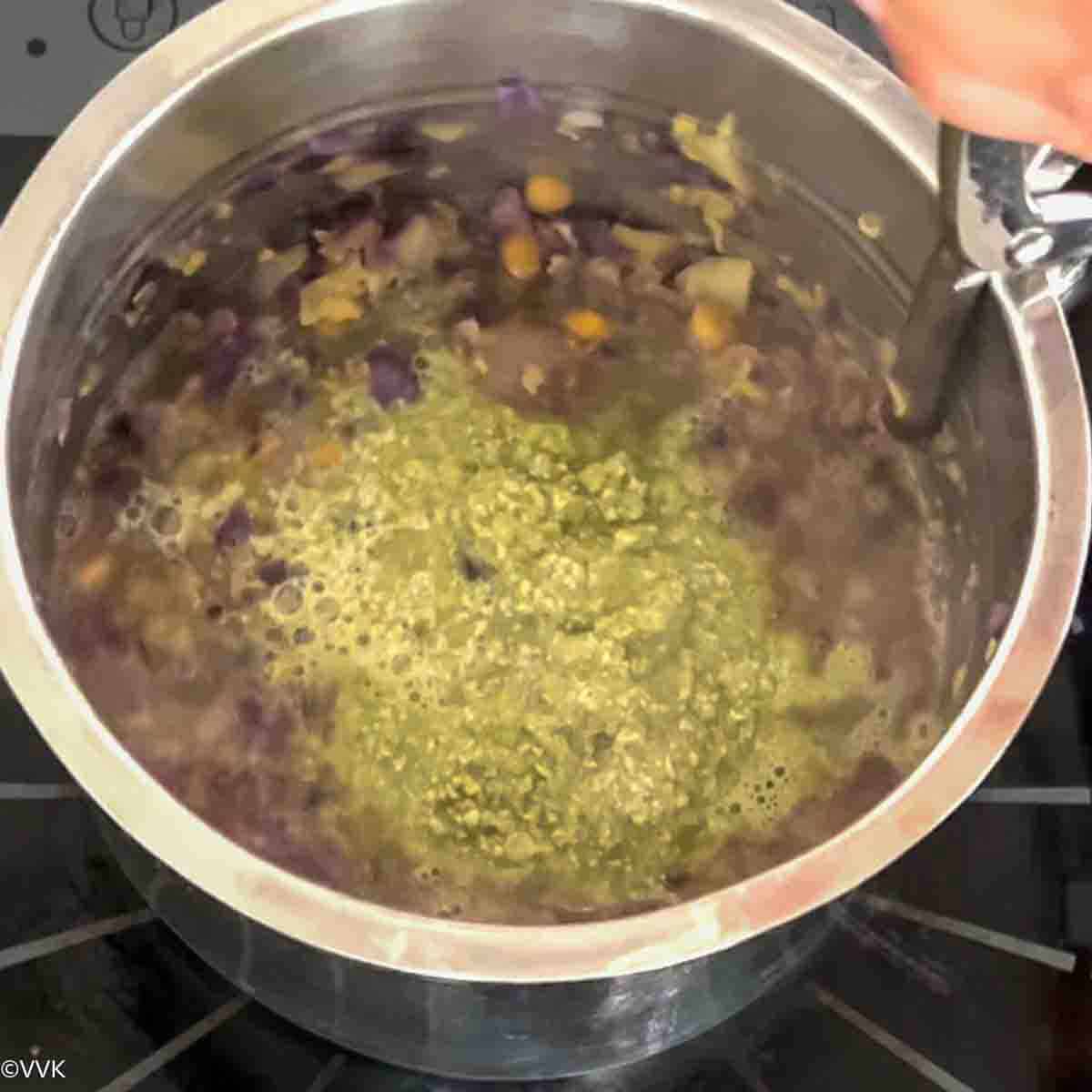
- Once the kootu starts simmering, turn off the heat.
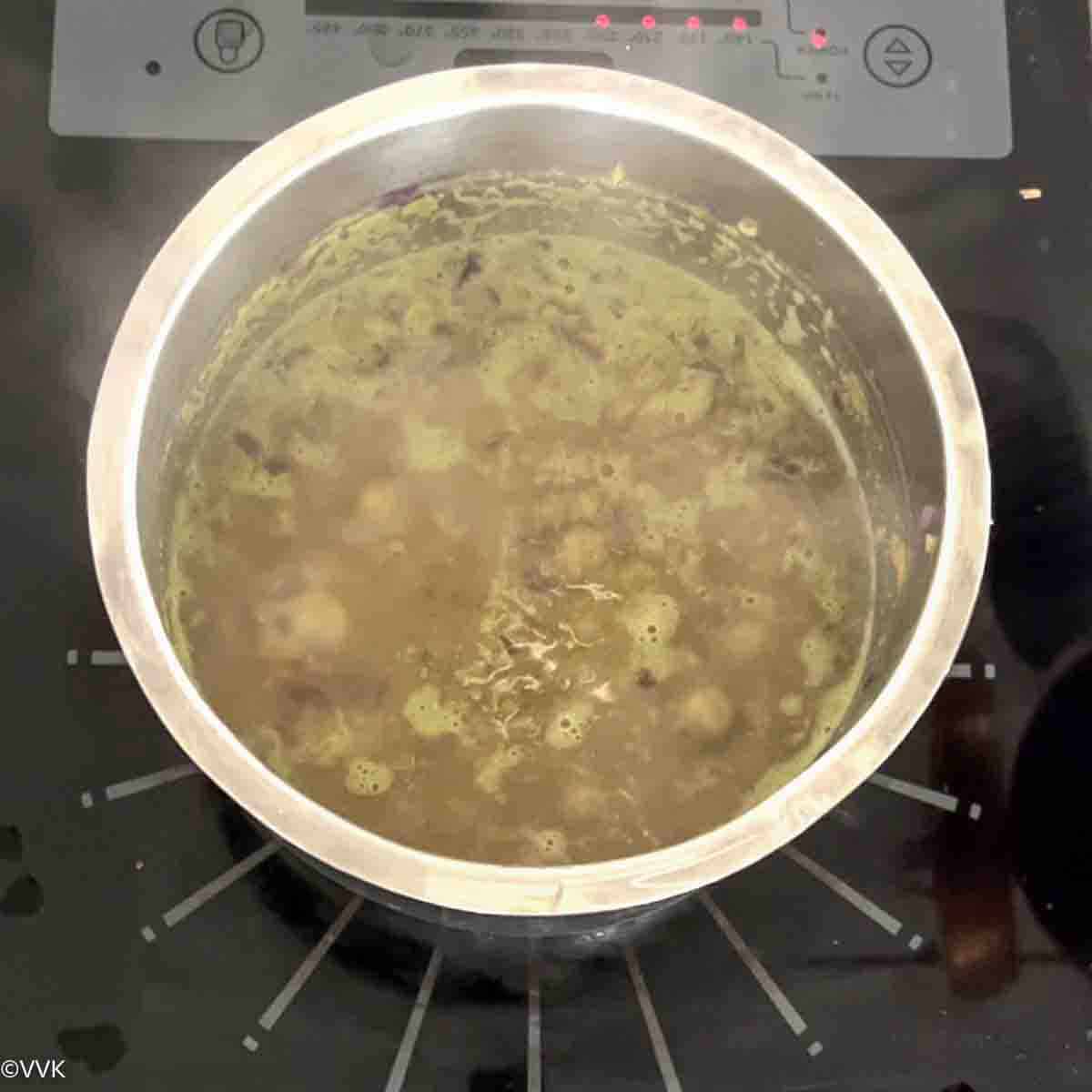
- For tempering, heat two teaspoons of coconut oil in a small pan. When hot, add mustard seeds and urad dal. Let the mustard seeds splutter and the urad dal turn light brown before adding the tempering to the kootu. Serve and enjoy.
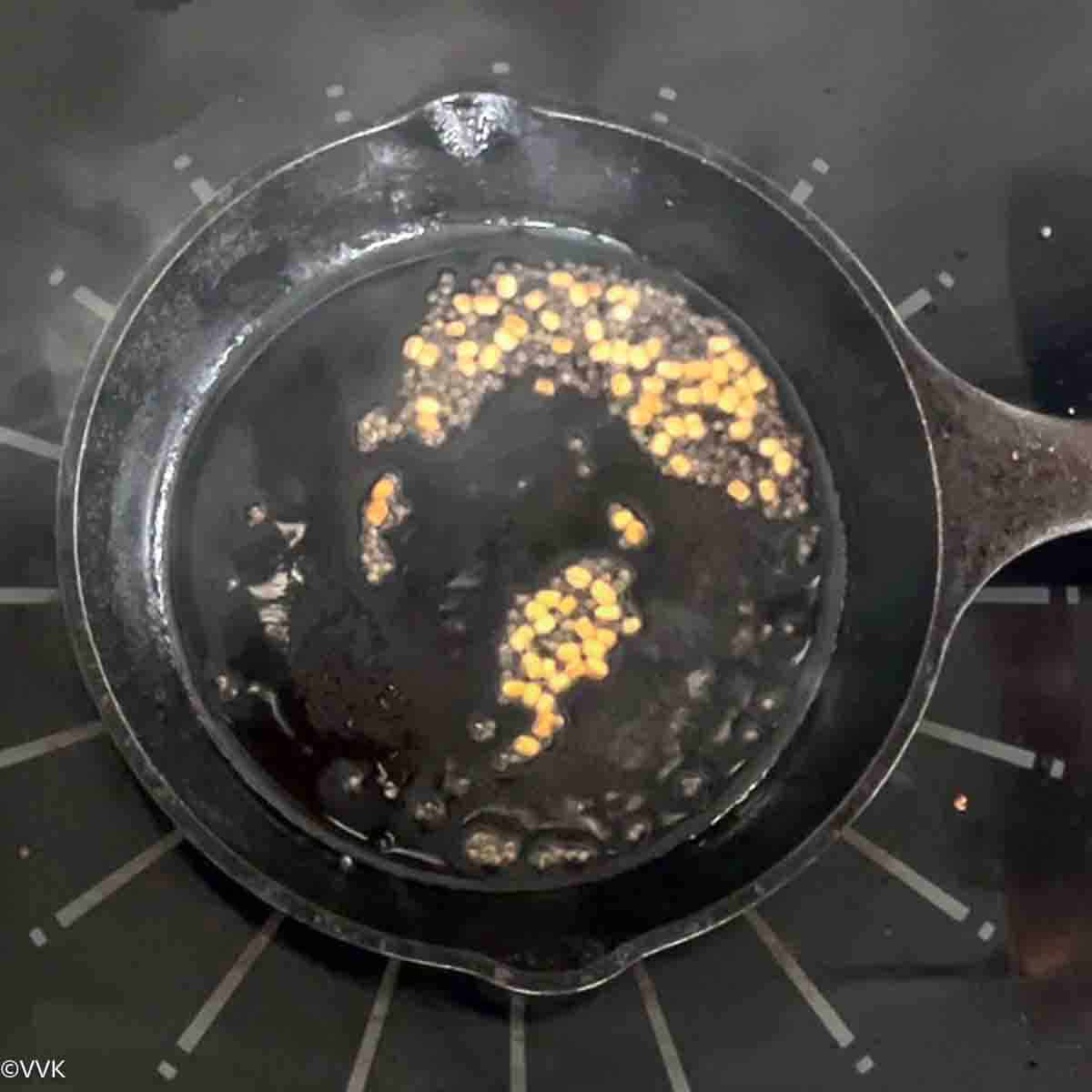
Recipe notes
- You can use either green or purple cabbage instead of a mix of both.
- Chana dal is optional and can be adjusted in quantity as per preference.
- Shallots are also optional; skip them for a no-onion version.
- If not using a pressure cooker, cook the moong dal and chana dal separately, mash them well, and proceed with the recipe. After tempering, add chopped cabbage, salt, and a sprinkle of water. Cover and cook until the cabbage softens, then add the mashed dal and ground masala.
- Adjust salt and spices to taste.
- A small half-inch piece of ginger can be added while grinding the masala for extra flavor.
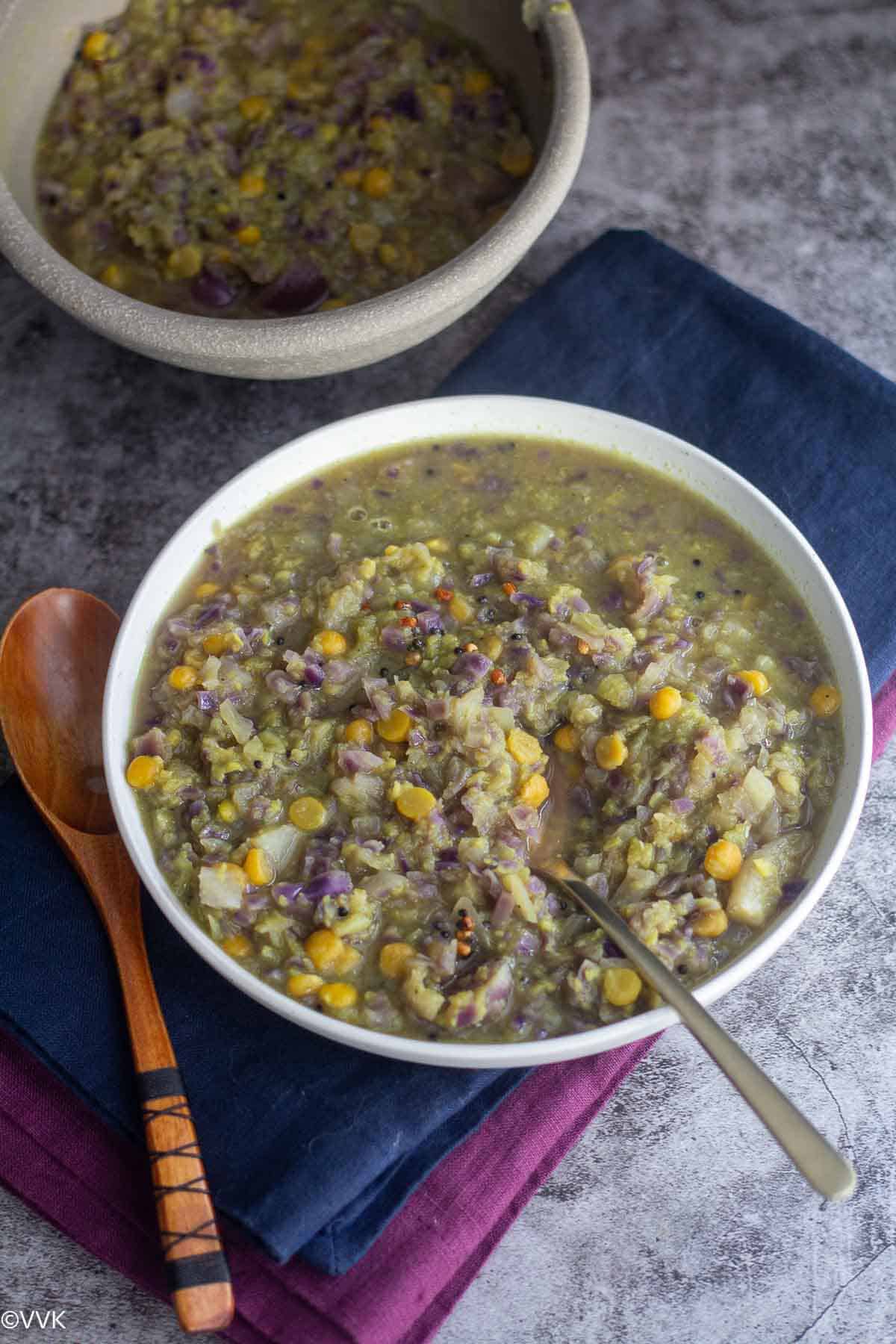
More kootu recipes
Loved this recipe?
If you try this cabbage kootu, please don’t forget to comment and rate this recipe. If you have any questions, please leave a comment, and I will get to it ASAP. Make sure to follow me on my Pinterest or Instagram or join my Facebook Group for recipe updates and simple Indian meal ideas.
📖 Recipe
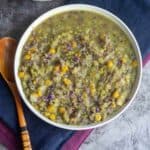
Pin Recipe
Print Recipe
Cabbage Kootu: Combining Green and Purple Cabbage
Learn how to make cabbage kootu, a traditional Tamil Nadu side dish with green and purple cabbage and coconut.
Servings: 6
Calories: 70kcal
Ingredients
Measurement Details: 1 cup= 240ml; 1 tbsp=15ml; 1tsp= 5ml;
Instructions
-
Rinse the moong dal and chana dal thoroughly and add them to the cooking vessel. To this, add shallots, turmeric powder, and 1 cup of water.
-
Layer the rinsed and chopped cabbage on top of the dal mixture without adding extra water.
-
Pressure cook for three whistles using a stovetop pressure cooker with the pot-in-pot method—add 2 cups of water to the base of the cooker, place the vessel inside, and cook. Let the pressure release naturally.
-
Meanwhile, grind coconut, green chilies, curry leaves, cilantro, cumin seeds, and pepper with ¼ cup of water to prepare the kootu masala.
-
To the cooked cabbage and dal, add 1.5 teaspoons of salt and mix well.
-
Stir in the ground masala along with ¼ cup of water (used to rinse the mixer jar) and bring the mixture to a gentle boil. As cabbage releases more water, avoid adding extra liquid beyond the recommended amount.
-
Once the kootu starts simmering, turn off the heat.
-
For tempering, heat two teaspoons of coconut oil in a small pan. When hot, add mustard seeds and urad dal. Let the mustard seeds splutter and the urad dal turn light brown before adding the tempering to the kootu. Serve and enjoy.
Video
Notes
- You can use either green or purple cabbage instead of a mix of both.
- Chana dal is optional and can be adjusted in quantity as per preference.
- Shallots are also optional; skip them for a no-onion version.
- If not using a pressure cooker, cook the moong dal and chana dal separately, mash them well, and proceed with the recipe. After tempering, add chopped cabbage, salt, and a sprinkle of water. Cover and cook until the cabbage softens, then add the mashed dal and ground masala.
- Adjust salt and spices to taste.
- A small half-inch piece of ginger can be added while grinding the masala for extra flavor.
Nutrition
Calories: 70kcal | Carbohydrates: 10g | Protein: 2g | Fat: 3g | Saturated Fat: 2g | Polyunsaturated Fat: 0.1g | Monounsaturated Fat: 0.3g | Sodium: 646mg | Potassium: 137mg | Fiber: 4g | Sugar: 3g | Vitamin A: 343IU | Vitamin C: 55mg | Calcium: 45mg | Iron: 1mg
I am not a nutritionist. The nutritional information is provided as a courtesy and is an estimate only. It varies depending upon the product types or brands.
Originally posted in 2016, this recipe has now been updated with a recipe card, fresh images, and nutritional details.

